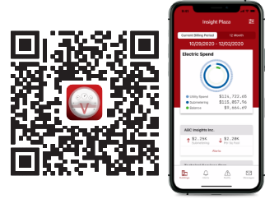The Bourne Measurement: Outsmarting Energy Loss With Check Meters
Data doesn't always reconcile. Installing check meters helps you quickly get to the bottom of weird numbers.
When Your Data Doesn't Make Sense
Ever read The Cuckoo’s Egg, the riveting true story of an astronomer-turned-systems manager who, in trying to reconcile his user account costs, stumbled onto a hacker attempting to access U.S. military bases via his laboratory network? What started off as a meticulous quest for 75 cents turned into a remarkable cyberchase involving spies, drugs, and the KGB.
A recent investigation of ours is just like that story. Well, almost. Our story doesn’t involve cocaine, the CIA, or German hackers selling secrets to our political enemies. But it does involve dogged pursuit of data discrepancies as well as missing cash! Quite a bit of $$$, in fact.
Finding the Data Discrepancy
Every morning our systems engineers and billing analysts go through the data for the buildings on their respective accounts. The building in this story was recently constructed and had check meters installed in series upstream from submeters measuring load on multiple floors. The engineer assigned to this account noticed something odd. The main switchgear meters were reading ~16 kW higher than the total of their downstream submeters.
When the building team was contacted about the discrepancy, they explained that a floor was being built out for the first time, which explained why readings had gone up recently. But it didn’t explain why the submeters and the upstream check meter didn’t reconcile.
What Is a Check Meter?
A check meter is exactly what it sounds like – a meter installed as an additional “check” on utility consumption. It’s not installed specifically for billing purposes but to help understand and confirm utility usage throughout the building. Think of it as the backup parachute for your profit margin.
The Problem in the Shadows
We communicated what we were seeing reading-wise with the onsite team. Upon investigation, they found that one of the submeters, which had been installed during construction but never had load before the build-out, had been wired incorrectly. Since the meter had never had load before (and hadn't been validated), its wiring issues went unidentified for years, until the build-out placed a load on the satellite disconnect and the problem was noticed by our eagle-eyed engineer (this win goes to senior systems engineer Erich Hesse).
As we’ve mentioned a time or two before, about 33% of all meters are installed incorrectly. And if you don’t have them validated, your billing data may be riddled with gaps that blast holes in your NOI.
That’s exactly what was going on at this property. Without the check meter (and our engineer’s diligence) to identify that more load was going out than was being captured, the property would potentially have lost out on recapturing that expense, amounting to $36,000 in annual revenue. Not a bad ROI on that $5K check meter.
Final Thoughts
Check meters don’t have to be revenue-grade. But if the meters downstream from it ARE revenue-grade, then it’s worth making the check meter rev-grade as well to make the check meter as effective in its role as possible.
If you don’t currently have check meters in your building, here are some reasons why you might want to install some:
- The percentage varies, but at least some of your submeters will have some sort of problem over the course of the year. But that doesn’t mean you'll know there's a problem right away. In other words, some "fail" with a whimper, not a bang. Having check meters makes it much easier to identify when a meter is quiet-quitting.
- In addition, when submeters have a problem – whether it be a communication, wiring, bad multiplier, or other issue – check meters are a good backup to keep your billing and cost recovery on track, especially in a new building or with new tenants, with no history available to estimate billing data. (Another good reason to go with revenue-grade meters.)
You Might Like
About utiliVisor
Your tenant submetering and energy plant optimization services are an essential part of your operation. You deserve personalized energy insights from a team that knows buildings from the inside out, applies IoT technology and is energized by providing you with accurate data and energy optimization insights. When you need experience, expertise, and service, you need utiliVisor on your side, delivering consistent energy and cost-saving strategies to you. What more can our 45+ years of experience and historical data do for you? Call utiliVisor at 212-260-4800 or visit utilivisor.com



